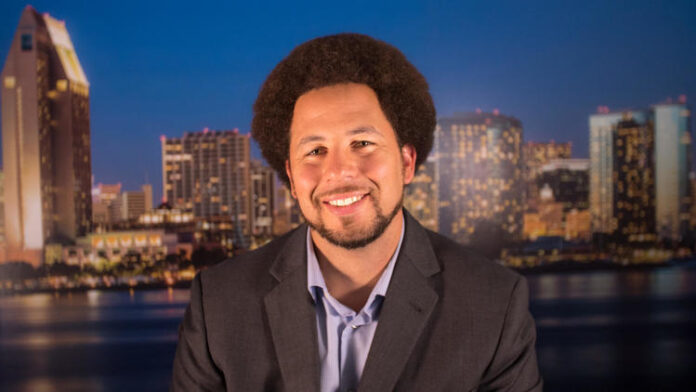
By
If you’re Black, chances are you’ve experienced it.
You’re in a mostly white space, maybe your workplace, a school classroom, or perhaps a social event. A white person with whom you’re interacting will do or say something seemingly innocuous — a joke about your hair, a compliment on how articulate you are, or asking if you really wrote that report the boss loved — that can trigger a stress response. Some describe it as a block of ice in their stomach; others experience sweaty palms, a racing heartbeat, or a mouth drier than paper.
The feeling prompts an inevitable question: Was that racist? But when confronted, that person is offended, becomes defensive, or dismisses the allegation outright. They might accuse you of being overly sensitive or even racist, transforming your insecurity or anger into self-doubt.
If this scenario is familiar, then you’ve encountered what Dr. J. Luke Wood, a sociologist and the new president of California State University, Sacramento, calls “racelighting” — an insidious form of racism that can trigger not only psychological but physical issues in its victims.
When the condition is identified, the healing can begin.
The term comes from the word “gaslighting,” defined as a form of emotional abuse in which the abuser intentionally manipulates the physical environment or mental state of the abused. The abuser then deflects responsibility, and insists that the changes are products of the abused’s imagination, weakening their perception of reality.
Wood says the racism-based manipulation is intended to cause Black people to second-guess their own experiences, their judgment, their memories, and, ultimately, their humanity.
While it parallels other racist behaviors, like implicit bias or microaggression, Wood says racelighting identifies a specific pattern of behavior that leads the target to question reality. Putting a name to that behavior, he says, is similar to a doctor making a medical diagnosis: When the condition is identified, the healing can begin.
“What we’ve tried to do with racelighting is to create a set of concepts and terms that help people to explain the nature and condition of their oppression,” he says. “It’s important because it allows you to have a better understanding of what’s going on — to examine it almost like an artifact so that you can see what’s taking place: ‘This is what I’m experiencing.’”
Being able to name something gives you more power over it. I don’t think we can downplay how important that is.
DR. J. LUKE WOOD
As with other aspects of racism, there is evidence that the internal conflicts triggered by racelighting do physical and emotional damage “very similar to how Combat Stress Syndrome impacts those who are in war zones,” Wood says.
“It impacts you cognitively — an inability to process information, retain information, manage attention control,” he says. “Then, constant anxiety and worrying: anger, resentment, emotional and social withdrawal. And then it impacts you physiologically: tension headaches, backaches, elevated heartbeat, upset stomach, extreme fatigue due to elevated cortisol levels within your body that are directly related to racialized stress.”
If you continue to sit in this, it may kill you slowly, but it’s going to kill you.
DR. J. LUKE WOOD
And it can take different forms, ranging from advancing stereotypes about Black people (“Criminality, being overly emotional,” Wood says) to false allyship (“People say and pretend like they’re doing something to support you or protect you, but really aren’t”) to misrepresenting the past by discounting Black history or pretending systemic racism doesn’t exist.
Exhibit A, Wood says: Florida Gov. Ron DeSantis’ attacks on “woke culture,” including revising school history standards to include positive outcomes from slavery and eliminating diversity, equity, and inclusion programs for state employees. Wood says DeSantis’s December 2021 statement supporting his state’s Stop W.O.K.E. Act is textbook racelighting:
“In Florida we’re taking a stand against state-sanctioned racism that is critical race theory… We will not allow for your tax dollars to be spent teaching kids to hate our country or to hate each other… We must protect Florida workers against a hostile work environment” that forces them to acknowledge racism.
While it identifies harmful behavior, racelighting also presents an opportunity to begin racial healing, Wood says.
“Being able to name something gives you more power over it. I don’t think we can downplay how important that is,” Wood says. When presenting his findings before Black audiences, “the number one thing I hear someone say afterwards is, ‘I’m so glad you gave me language to explain what I’ve always felt but didn’t know how to describe.’’
“It is humbling, because we recognize that this work is about trying to help people who come from our community who oftentimes are in a (hostile) environment,” he says.
The most effective antidote to racelighting is for Black people to immerse themselves in Black spaces that are welcoming, validating, or supportive — “a club or organization, maybe a historically black fraternity, maybe a cultural club,” Wood says. “You’ve got to be in a place where you can see yourself through distress, disdain, and disregard. Where someone is instead going to extol your brilliance, your dignity.”
Otherwise, he says, “If you continue to sit in this, it may kill you slowly, but it’s going to kill you.”



